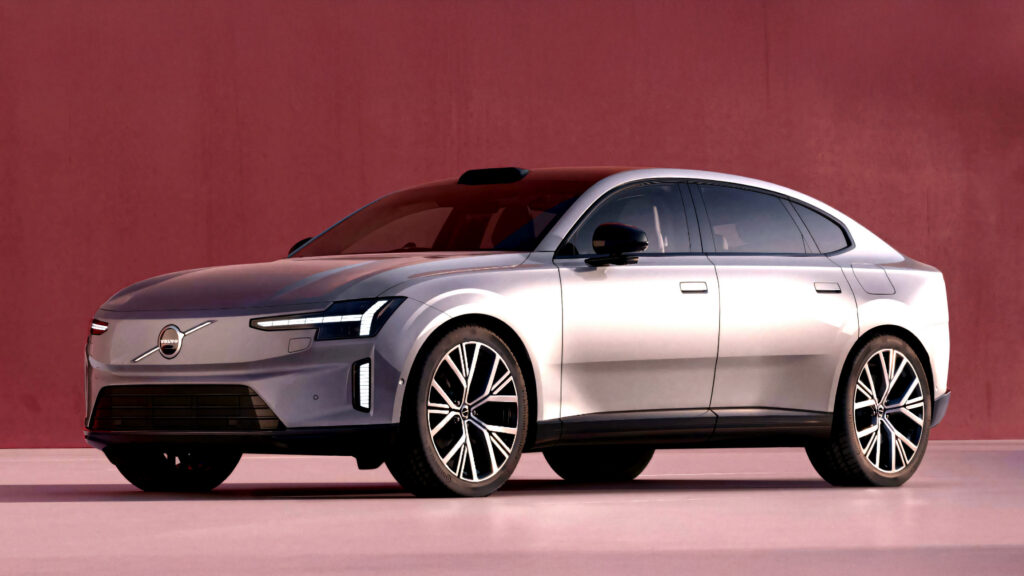Volvo 240R EV Study Throws A Brick At Electric Performance
- The Volvo 240R is an independent concept for a high-performance sedan and wagon.
- It blends the boxy shape of the classic Volvo 200 Series with modern design elements.
- The project was created by independent designer Jordan Rubinstein-Towler.
Polestar has come a long way from its origins as Volvo’s performance division, evolving into a standalone electric vehicle manufacturer. But with this shift in direction, it raises the inevitable question: Will future Volvo models get high-performance variants like BMW’s M division or Mercedes’ AMG lineup? Well, independent designer Jordan Rubinstein-Towler has ventured into this very idea with his creation, the 240R, which is a high-performance, retro-futuristic take on his own Volvo 240 concept.
A Nod to the Past with a Twist
In keeping with the spirit of the original design study, the Volvo 240R blends the unmistakable boxy shape of the old 200 Series with modern styling. The R version introduces a sporty bodykit—think deeper bumpers, side skirts, a subtle diffuser, and a ducktail spoiler. It’s like the 240 got a solid workout, but still managed to keep its classic personality.
More: Modern Volvo 240 Design Study Proves Boxy Can Be Sexy Again
The renders speak for themselves. Rubinstein-Towler’s design work strikes a perfect balance with black and body-colored accents on the revamped parts, delivering that classic yet contemporary look. To really emphasize the performance angle, the car rolls on new black five-spoke alloy wheels, an homage to Volvo’s sporty heritage.
In one of the renderings, the sedan poses next to a Volvo 240 racer that enjoyed great success in touring car championships back in the ’80s. Likewise, the wagon is joined by the Volvo 850 R from the mid-90s.
Modern Interior, Retro Vibes
But the 240R isn’t just about looking fast on the outside—Rubinstein-Towler has also done some work on the interior. Highlights include the blue upholstery that brings a splash of color to the retro-inspired bucket seats, along with a fresh new steering wheel design. The digital cockpit, while updated, keeps things minimalist with a few smaller displays, paired with physical controls to preserve that tactile feel on the center console.
Illustrations Jordan Rubinstein-Towler
Power to Match the Looks?
Now, if this car ever made it to production, what’s going to power this modern interpretation of the classic ‘brick’? Since the modern reimagining of the Volvo 240 is an electric vehicle, the (fictional) 240R would also be expected to run on a zero-emission powertrain.
A quick peek into the Geely parts bin—Volvo’s parent company—shows that a high-performance electric car is well within reach. Take the Twin Motor Performance version of the new Volvo ES90, for instance; it produces a combined 671 hp (680 PS / 500 kW). That’s plenty of power for both a high-performance sedan and wagon.
Speaking of the ES90, the electric liftback sedan recently debuted as a direct rival to the BMW i5 and Mercedes EQE. From Rubinstein-Towler’s renderings, it looks like his 240R proposal could slot in just below that model, potentially filling the gap left by the soon-to-be-discontinued S60/V60.
More: Volvo Doesn’t Need Wagons Anymore, Says SUVs Are The Future
Such an offering would compete against the upcoming BMW Neue Klasse i3 and the electric Mercedes C-Class. BMW M has already teased a high-performance version of the electric sedan, while Mercedes is expected to release an AMG version sooner or later.
Hopefully, Volvo’s design team is paying attention to the innovative concepts emerging from independent designers. Perhaps they’ll find some inspiration for future models – assuming they’re not too busy figuring out how to make their SUVs even more ubiquitous.
